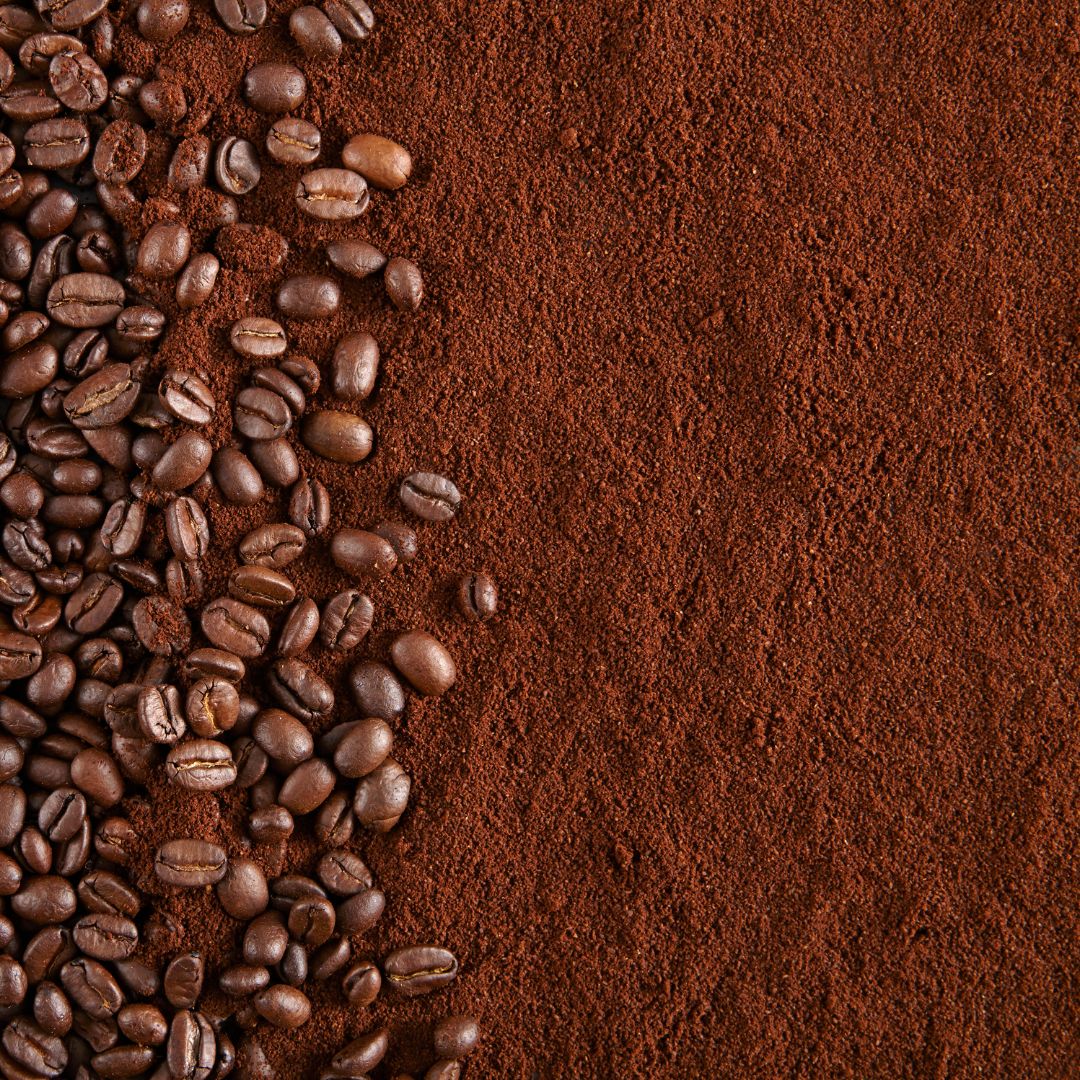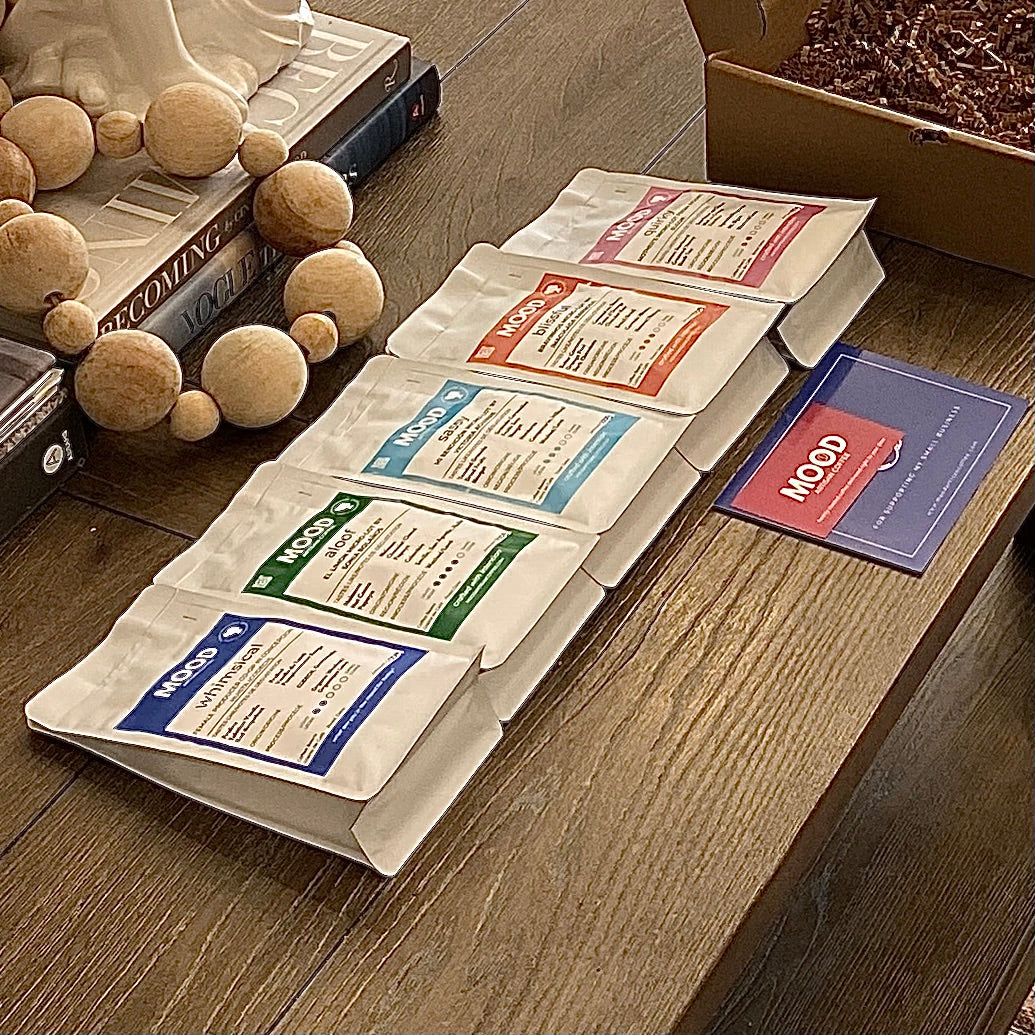
All About Grind Size
Share
The Grind Guide: Coarse, Fine, and Everything in Between
If you’ve ever wondered why your coffee sometimes tastes bitter, sour, or just “off,” your grind size might be the culprit. The grind is one of the most overlooked parts of home brewing, yet one of the easiest things to fix once you understand it.
That said, grind size isn’t always the first thing I adjust when something tastes off. Personally, I tweak dose first (how much coffee I’m using) before touching grind. Once I’ve ruled out ratio or freshness issues, then I start fine-tuning grind size to get that perfect balance of sweetness, acidity, and body.
So while grind matters a lot, think of it as part of the bigger picture: coffee, water, and time all working together.
Let’s break it down simply.
Why Grind Size Matters
When you brew coffee, you’re dissolving flavour compounds from the beans into water. The grind size determines surface area (how much coffee is exposed to water) and contact time (how long that water interacts with it)
- Finer grinds = more surface area = faster extraction
- Coarser grinds = less surface area = slower extraction
The goal is balanced extraction: sweetness, acidity, and body all in harmony.
- If your coffee tastes dull or bitter, it’s likely under-extracted (the water didn’t pull out enough solubles so you need to grind finer).
- If it tastes sour or astringent, it’s over-extracted (the water stayed in contact too long so you need to grind coarser).
Think of it like steeping tea: too short and it’s flat, too long and it’s sharp.
Note: people normally get their sours and bitters mixed up. A solution to that? A lemon! Try dabbing a bit of lemon juice on your tongue. The juice is sour. Next, chew on a small piece of the lemon pith (the white part). The pith is bitter. Ground yourself in this test and it will refine your palate faster than any other technique you've ever practiced.
A Visual Reference (Use This Next Time You Grind)
Here’s a simple guide you can use at home. If you have a burr grinder, use this as a baseline. If you’re using a blade grinder, pulse lightly and check texture often.
DISCLAIMER: These are guidelines only. They are not rules!
| Grind Size | Texture Looks Like | Best For | Brew Time | Flavour Profile |
|---|---|---|---|---|
| Extra Coarse | Like sea salt | Cold brew | 12–24 hrs | Smooth, low acidity |
| Coarse | Like kosher salt | French press | 4–5 min | Bold, heavy body |
| Medium-Coarse | Between sand and salt | Chemex | 3–4 min | Balanced, clean cup |
| Medium | Like regular sand | Drip coffee makers | 2–4 min | Sweet, even, classic |
| Medium-Fine | Finer than sand but not powder | Pour over (Hario, Kalita), Aeropress | 2–3 min | Bright, layered flavours |
| Fine | Like fine salt | Espresso, Moka pot | 20–40 sec | Intense, syrupy, strong |
| Extra Fine | Like flour | Turkish coffee | Boiled | Rich, full-bodied, almost creamy |
How Grind Size Affects Flavour
Each grind size changes what you taste in your cup. Here’s how:
1. Coarse Grinds
- Taste: Rounded, low in acidity, heavier in body.
- Common Mistake: Coffee turns watery or flat if brew time is too short.
- Pro Tip: Stir or agitate midway through brewing to help even extraction.
Coarse grinds work best when coffee and water have a long relationship, like a French press or cold brew. They allow a slow, gentle extraction that highlights deeper, chocolaty notes (great for coffees like Blissful from Brazil).
2. Medium Grinds
- Taste: Balanced sweetness, clarity, and acidity.
- Common Mistake: People often confuse medium with coarse, under-extracting in drip machines.
- Pro Tip: For automatic drip, grind a bit finer than you think. Machines don’t always saturate coffee evenly.
Medium grinds are your everyday heroes. If you’re brewing Aloof or Whimsical, this grind lets their nuanced fruit and nut flavours come alive.
3. Medium-Fine Grinds
- Taste: Bright, clean, and naturally sweet.
- Common Mistake: Brewing too long and pulling out sharpness.
- Pro Tip: With pour over or Aeropress, aim for a 2–3 minute brew for a balanced cup.
Medium-fine is a sweet spot for both pour over and Aeropress. It gives you clarity without losing body, ideal for exploring coffees with fruity or floral notes like Nostalgia or Sassy.
4. Fine Grinds
- Taste: Intense, complex, sweet and syrupy
- Common Mistake: Over-packing espresso baskets or brewing too long, leading to harsh or sharp notes.
- Pro Tip: If your espresso shot runs too slowly (over 35 sec), coarsen slightly.
Fine grinds shine in espresso because the pressurized water can extract flavours fast.
Matching Grind to Brewing Method
To help you dial in faster, here’s a cheat sheet you can screenshot or print.
| Brewing Method | Ideal Grind | Notes |
|---|---|---|
| Cold Brew | Extra Coarse | Long steep = smoother, low acidity |
| French Press | Coarse | Prevents gritty texture and bitterness |
| Chemex | Medium-Coarse | Keeps clarity in large filter cone |
| Drip Maker | Medium | Works best with even water flow |
| Aeropress | Medium-Fine | Balanced extraction, clean and sweet cup |
| Pour Over (Hario/Kalita) | Medium-Fine | Highlights sweetness and fruit |
| Espresso | Fine | Allows balanced extraction under pressure |
| Turkish Coffee | Extra Fine | Coffee dissolves directly into water |
How to Tell If You’re Off
Too Coarse
- Coffee tastes bitter or flat.
- Brew finishes too quickly.
- The grounds look dry in the middle after brewing.
Fix: Try a slightly finer grind next time or brew longer.
Too Fine
- Coffee tastes sour or astringent.
- Brew takes too long to finish (especially pour over or espresso).
- There’s sludge or excessive sediment at the bottom.
Fix: Go coarser or shorten brew time.
How to Dial In Your Grind
-
Start in the middle.
If your grinder has numbers, begin around the middle setting for your method. -
Adjust one variable at a time.
Don’t change grind and brew ratio together. Fix one, taste, and note the result. -
Keep notes.
Write down brew time, grind number, and taste impressions. Small logs help you dial in faster next time. -
Listen to your taste buds.
There’s no “perfect” grind, only your ideal cup.
When to Re-Check Your Grind
Your grind setting isn’t permanent. It depends on:
- Coffee age: Older beans generally need a coarser grind and a longer brew time to extract properly.
- Roast level: Darker roasts are softer; go coarser.
- Brewing gear: Each brewer and coffee has unique water flow and temperature profiles.
Consistency doesn’t mean static. It means intentional micro-changes to maintain balance.
Bringing It Back to the Mood
At Mood Artisan Coffee, every roast is crafted to highlight natural sweetness and clarity. Grind size is how you unlock that intention at home.
If you love experimenting, try brewing the same coffee three ways:
- Nostalgia on French press (coarse) for smooth vanilla and marzipan.
- Nostalgia on Aeropress (medium-fine) for a balanced, syrupy sweetness.
- Nostalgia on pour over (medium-fine) for bright peach and apricot notes.
Same coffee. Three moods. Totally different experiences.
TL;DR: Your Coffee Grind Cheat Sheet
- Fine = faster extraction = more brightness.
- Coarse = slower extraction = more body.
- Bitter/dull = under-extracted → grind finer.
- Sour/astringent = over-extracted → grind coarser.
- Start in the middle and adjust based on taste.
- Tweak dose first, then adjust grind if needed.
Ready to test it out?
Grab your grinder, pick your favourite Mood coffee, and experiment.
You’ll be surprised how much a small adjustment can change everything.

4 comments
@eileen – excellent question and one that comes up quite often. I used to have this issue too and a few small changes made a big difference in terms of end temperature.
1. Preheat your French press – Before brewing, swirl some hot water around in the carafe for about 15-30 seconds so it is warm/hot when you begin to brew. This is especially helpful in the winter months!
2. Cover with the lid while the coffee is steeping.
3. Use a double-walled French press if possible. It does wonders for insulating your coffee while brewing!
@kevin – such a great addition to the post and I completely agree. Having a great quality burr grinder and a mediocre coffee maker/machine will always beat a high end machine with a not-so-great grinder! And the 1Zpresso K-Ultra is definitely worth the investment :)
A question about temperature…my French press is great but by the time it’s brewed it’s not as hot as I’d like. Any suggestions?
Underscoring this is having a good quality burr grinder. My switch to an 1Zpresso K-Ultra has been one of the best investments I have made in coffee brewing.